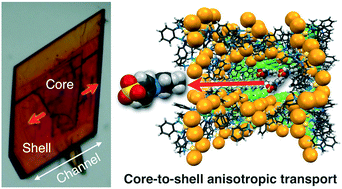Core–shell metal–macrocycle framework (MMF): spatially selective dye inclusion through core-to-shell anisotropic transport along crystalline 1D-channels connected by epitaxial growth†
Abstract
Designing unique core–shell porous crystals is key to the development of anisotropically functionalised materials. Herein we report the facile preparation of a core–shell metal–macrocycle framework (MMF) containing continuous 1D-channels via an epitaxial growth procedure. Methyl orange loaded in the core was found to be anisotropically transported to the shell along the heterogeneously hybridised 1D-channels.



 Please wait while we load your content...
Please wait while we load your content...